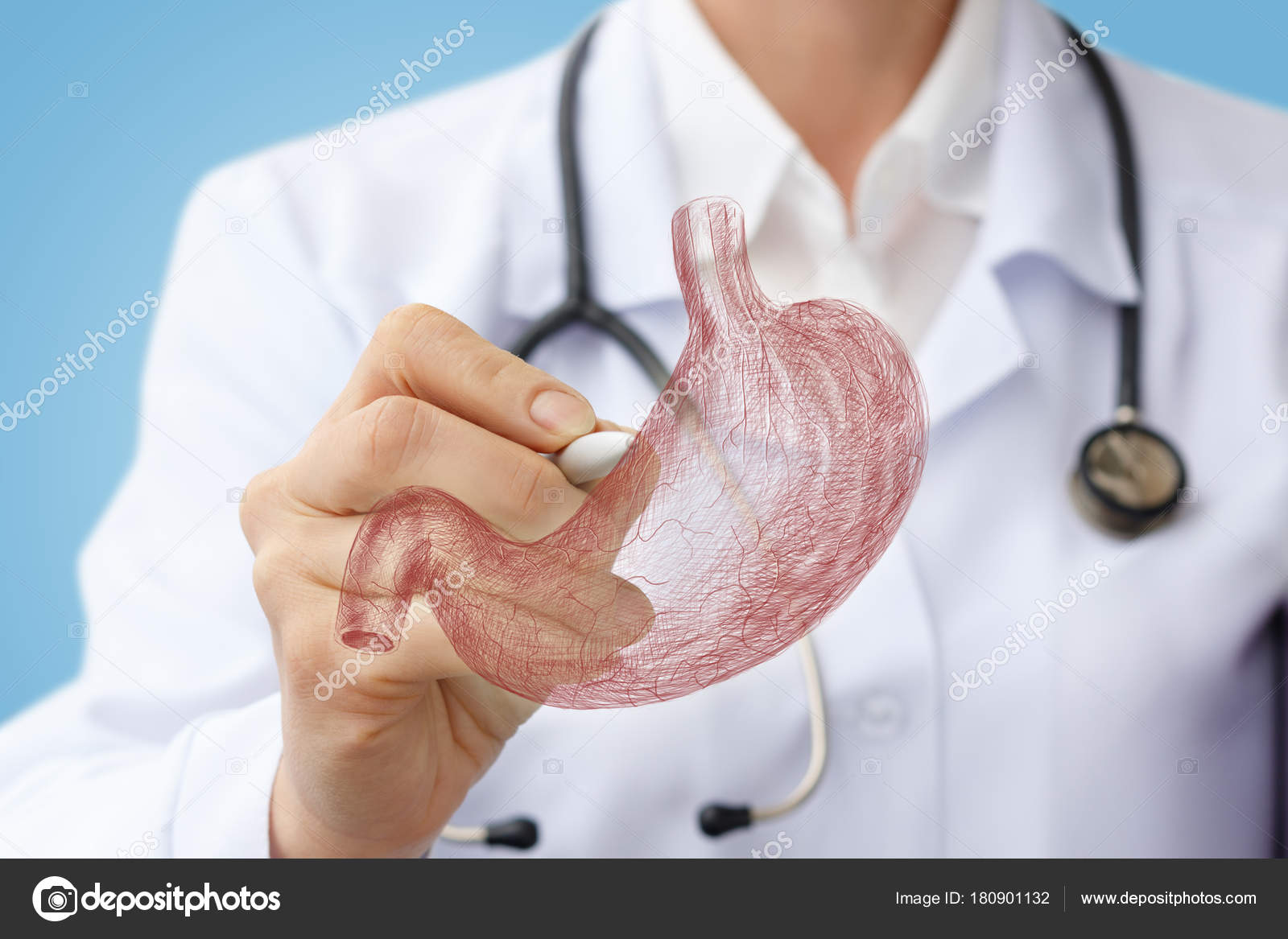Stomach ulcer doctors. Peptic Ulcers: Symptoms, Causes, Diagnosis and Treatment
What are the common signs of a peptic ulcer. How do doctors diagnose stomach and duodenal ulcers. What treatments are available for peptic ulcers. Who is at risk for developing ulcers.
Understanding Peptic Ulcers: Types and Locations
Peptic ulcers are open sores that develop on the inner lining of the stomach and upper portion of the small intestine. There are two main types:
- Gastric ulcers: Occur in the stomach
- Duodenal ulcers: Form in the duodenum (first part of the small intestine)
These painful sores form when stomach acid damages the protective lining of the digestive tract. While ulcers can occur at any age, they are most common in older adults between 55-65 years old.
Recognizing the Symptoms of Peptic Ulcers
The signs and symptoms of peptic ulcers can vary from person to person. Common indicators include:
- Burning or gnawing pain in the middle or upper stomach between meals
- Feeling of fullness, bloating, or belching
- Nausea or vomiting
- Intolerance to fatty foods
- Heartburn
More severe symptoms that require immediate medical attention include:

- Dark, tarry stools (indicating gastrointestinal bleeding)
- Vomiting blood or material that looks like coffee grounds
- Severe, persistent abdominal pain
- Unexplained weight loss
Can peptic ulcers be asymptomatic?
Yes, some people with peptic ulcers may not experience any symptoms at all. This is why regular check-ups with a healthcare provider are important, especially if you have risk factors for ulcers.
The Primary Causes of Peptic Ulcers
Contrary to popular belief, stress and spicy foods do not cause peptic ulcers, although they may exacerbate symptoms. The two main causes of peptic ulcers are:
- Helicobacter pylori (H. pylori) infection: This bacterium is responsible for about 60% of peptic ulcers. H. pylori weakens the protective mucus coating of the stomach and small intestine, allowing acid to damage the sensitive lining beneath.
- Regular use of nonsteroidal anti-inflammatory drugs (NSAIDs): Medications like aspirin, ibuprofen, and naproxen can irritate or inflame the lining of the stomach and small intestine, leading to ulcers.
Are there other factors that can increase the risk of developing peptic ulcers?
Yes, several factors can increase your risk of peptic ulcers:
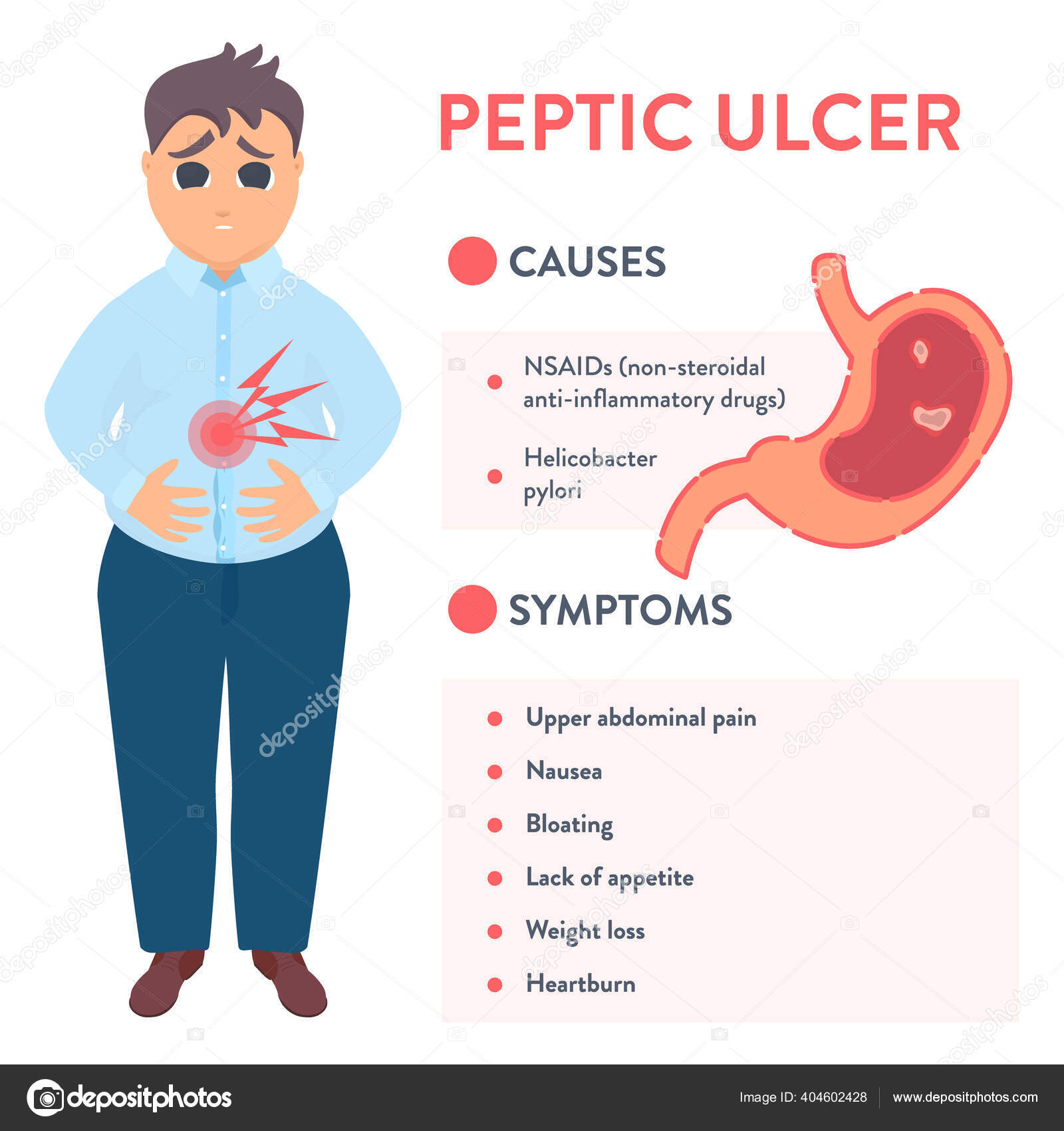
- Smoking
- Excessive alcohol consumption
- Untreated stress
- Family history of ulcers
- Other diseases, such as liver, kidney, or lung disease
Diagnostic Procedures for Peptic Ulcers
Diagnosing peptic ulcers typically involves a combination of medical history, physical examination, and diagnostic tests. Here’s an overview of the diagnostic process:
Medical History and Physical Examination
Your doctor will start by asking about your symptoms, medical history, and any medications you’re taking. They will also perform a physical exam, which may include:
- Checking for abdominal tenderness
- Listening to sounds within your abdomen using a stethoscope
- Tapping on your abdomen to check for pain or discomfort
Diagnostic Tests for Peptic Ulcers
To confirm the diagnosis and determine the underlying cause, your doctor may order one or more of the following tests:
- Blood tests: These can check for H. pylori infection and anemia, which can indicate bleeding ulcers.
- Urea breath test: This non-invasive test can detect H. pylori infection by measuring carbon dioxide in your breath after consuming a special solution.
- Stool tests: These can detect H. pylori infection or blood in the stool, which may indicate bleeding in the digestive tract.
- Upper gastrointestinal (GI) endoscopy: This procedure allows the doctor to visually examine your esophagus, stomach, and duodenum using a thin, flexible tube with a camera. Biopsies can also be taken during this procedure.
- Upper GI series: Also known as a barium swallow, this X-ray test provides images of your upper digestive tract to help identify ulcers.
How accurate are these diagnostic tests for peptic ulcers?
The accuracy of these tests varies, but when used in combination, they provide a high level of diagnostic certainty. Upper GI endoscopy is considered the gold standard for diagnosing peptic ulcers, with an accuracy rate of over 90%.
:max_bytes(150000):strip_icc()/peptic-ulcer-disease-diagnosis-4707600_final-51498411f53a44d8bc49efda9d31e2fd.jpg)
Treatment Options for Peptic Ulcers
The treatment for peptic ulcers depends on the underlying cause. The main goals of treatment are to eliminate the H. pylori infection if present, reduce stomach acid, and protect the lining of the stomach and small intestine. Common treatment approaches include:
Medications
- Antibiotics: If H. pylori is detected, a combination of antibiotics is prescribed to eliminate the infection.
- Proton pump inhibitors (PPIs): These medications reduce stomach acid production, allowing the ulcer to heal.
- Histamine blockers (H2 blockers): These drugs also decrease stomach acid production.
- Antacids: These provide quick relief from ulcer pain by neutralizing stomach acid.
- Cytoprotective agents: These medications help protect the lining of the stomach and small intestine.
Lifestyle Changes
In addition to medication, certain lifestyle modifications can help manage peptic ulcers:
- Quit smoking
- Limit or avoid alcohol
- Manage stress through relaxation techniques or counseling
- Avoid foods that trigger discomfort
- Eat smaller, more frequent meals
What is the typical duration of treatment for peptic ulcers?
Treatment duration varies depending on the severity of the ulcer and its cause. Most ulcers heal within 4-8 weeks with appropriate treatment. However, it’s crucial to complete the full course of prescribed medications, even if symptoms improve earlier.

Complications Associated with Peptic Ulcers
While most peptic ulcers heal with proper treatment, some can lead to serious complications if left untreated. These include:
- Internal bleeding: This can occur slowly or quickly, potentially leading to anemia or the need for blood transfusions.
- Perforation: A hole can form in the wall of the stomach or small intestine, requiring immediate surgery.
- Obstruction: Ulcers can cause swelling and scarring, potentially blocking the passage of food through the digestive tract.
- Peritonitis: If an ulcer perforates the stomach or intestinal wall, bacteria and partially digested food can spill into the abdominal cavity, causing a dangerous infection.
How common are these complications?
Serious complications from peptic ulcers are relatively rare, occurring in about 10-20% of cases. However, the risk increases significantly in older adults and those who continue to smoke or use NSAIDs while having an active ulcer.
Prevention Strategies for Peptic Ulcers
While not all peptic ulcers can be prevented, several strategies can reduce your risk:
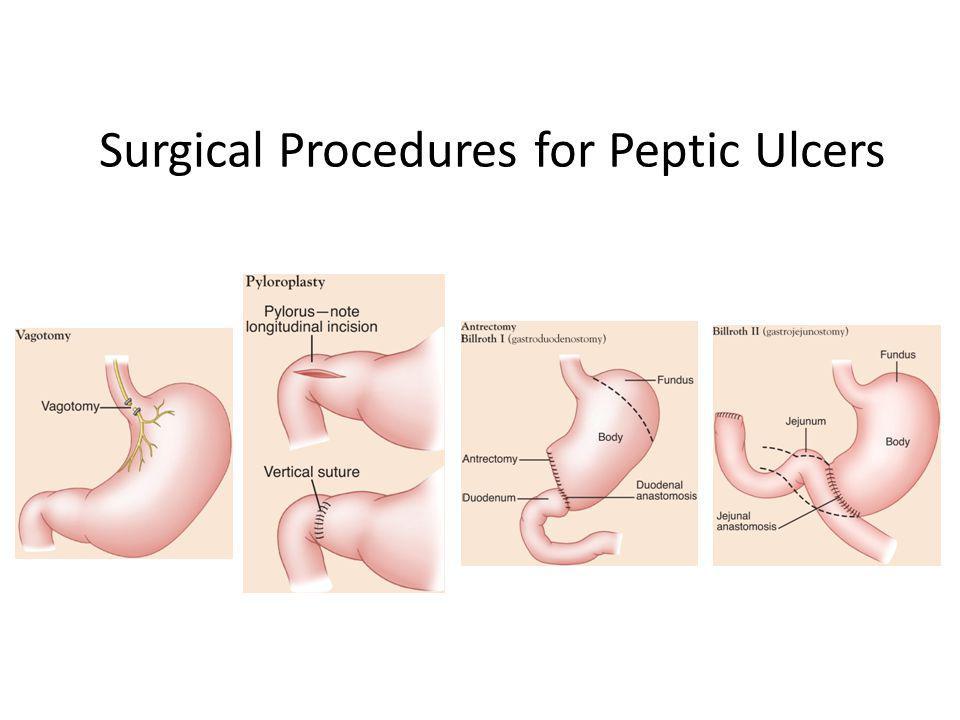
- Practice good hygiene: Wash your hands frequently and thoroughly to reduce the risk of H. pylori infection.
- Use caution with NSAIDs: If you need to take NSAIDs regularly, talk to your doctor about strategies to protect your stomach, such as taking them with food or using a protective medication.
- Don’t smoke: Smoking can increase stomach acid production and decrease the protective factors in your stomach.
- Limit alcohol consumption: Excessive alcohol can irritate and erode the mucous lining of your stomach.
- Manage stress: While stress doesn’t cause ulcers, it can exacerbate symptoms. Practice stress-reduction techniques like meditation or yoga.
- Eat a healthy diet: While no specific diet is recommended for ulcer prevention, a diet rich in fruits, vegetables, and whole grains may reduce your risk of H. pylori infection.
Can probiotics help prevent peptic ulcers?
Some studies suggest that probiotics may help prevent H. pylori infection and reduce its negative effects on the stomach lining. However, more research is needed to confirm their effectiveness in preventing peptic ulcers.

Living with Peptic Ulcers: Long-term Management and Outlook
For most people, peptic ulcers are a treatable condition with a good long-term outlook. However, proper management is crucial to prevent recurrence and complications. Here are some tips for living with peptic ulcers:
- Follow your treatment plan: Take all prescribed medications as directed, even if you start feeling better.
- Attend follow-up appointments: Regular check-ups allow your doctor to monitor your progress and adjust treatment if necessary.
- Be aware of warning signs: Know the symptoms of ulcer complications and seek immediate medical attention if they occur.
- Make lifestyle changes: Adopt healthy habits that support digestive health and overall well-being.
- Manage other health conditions: Some conditions, like Zollinger-Ellison syndrome, can increase the risk of ulcers. Work with your healthcare team to manage these conditions effectively.
What is the recurrence rate for peptic ulcers?
The recurrence rate for peptic ulcers varies depending on the cause and adherence to treatment. For H. pylori-related ulcers, the recurrence rate is less than 5% if the infection is successfully eradicated. For NSAID-related ulcers, the risk of recurrence is higher if NSAID use is continued.
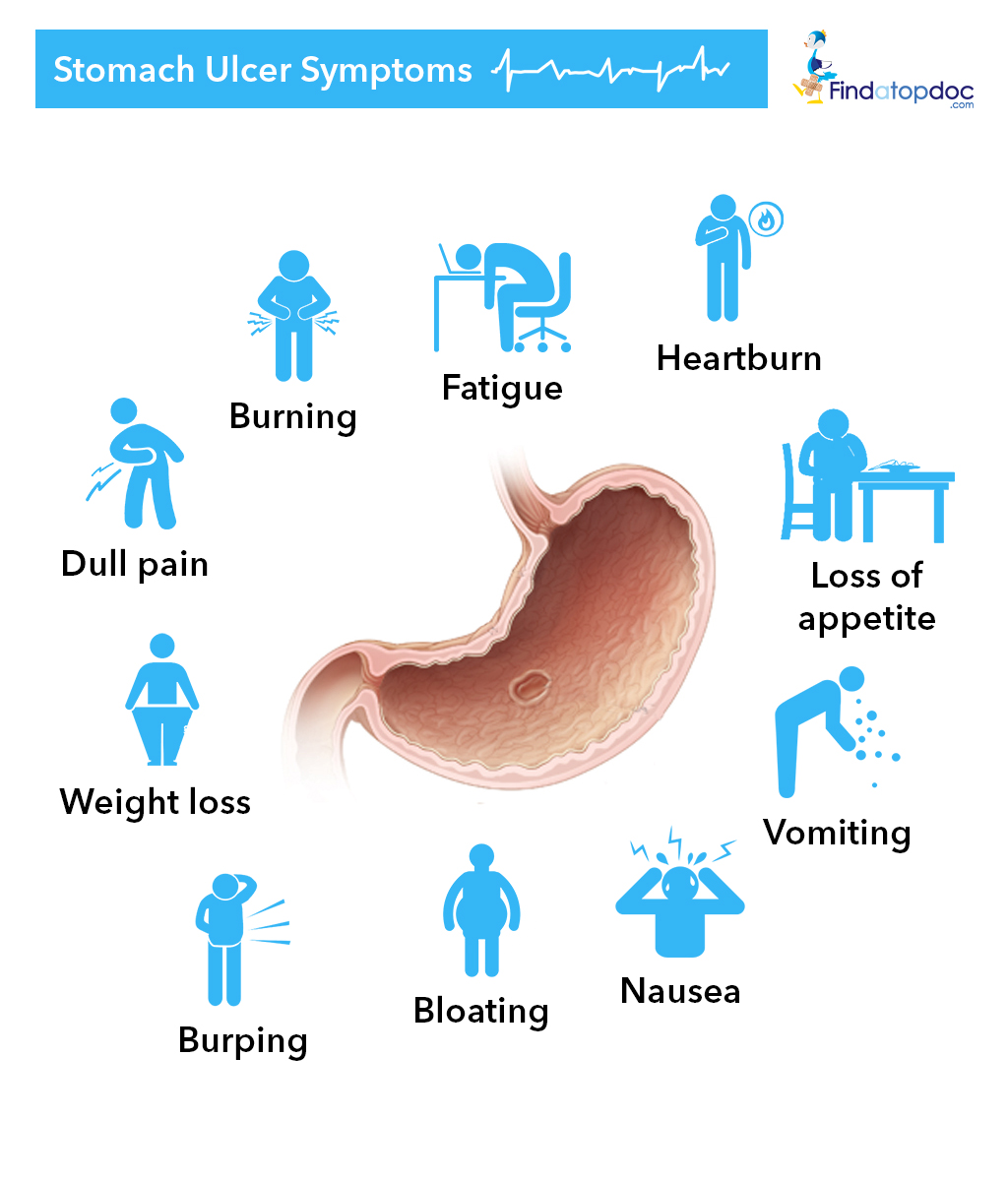
Understanding peptic ulcers, their causes, symptoms, and treatment options is crucial for effective management of this condition. By working closely with healthcare providers and making necessary lifestyle changes, most people with peptic ulcers can achieve healing and prevent future occurrences. Remember, early diagnosis and treatment are key to avoiding complications and ensuring the best possible outcome.
Diagnosis of Peptic Ulcers (Stomach or Duodenal Ulcers)
How do doctors diagnose a peptic ulcer?
Your doctor may ask you about your medical and family history, perform a physical exam, and order tests to diagnose a peptic ulcer, find its cause, and check for complications.
Medical and family history
To help diagnose peptic ulcers and check for factors that cause ulcers, your doctor will take a medical and family history. Your doctor may ask about
- your symptoms
- your medical history, including any past peptic ulcers or Helicobacter pylori (H. pylori) infections
- medicines you take, especially nonsteroidal anti-inflammatory drugs (NSAIDs)
- your family history of peptic ulcers, H. pylori infection, or cancer in the digestive tract
To help diagnose a peptic ulcer, your doctor will take a medical and family history.
Physical exam
A physical exam may help a doctor diagnose peptic ulcers or ulcer complications. During a physical exam, a doctor most often
During a physical exam, a doctor most often
- checks for swelling in your abdomen
- listens to sounds within your abdomen using a stethoscope
- taps on your abdomen checking for tenderness or pain
What tests do doctors use to diagnose peptic ulcers?
Doctors may order medical tests to help diagnose peptic ulcers, find the cause, and check for complications.
Blood test
Doctors may use blood tests to check for signs of H. pylori infection or complications of peptic ulcers. For a blood test, a health care professional will take a blood sample from you and send the sample to a lab.
Urea breath test
Doctors may use a urea breath test to check for H. pylori infection. For the test, you will swallow a capsule, liquid, or pudding that contains urea “labeled” with a special carbon atom. If H. pylori is present, the bacteria will convert the urea into carbon dioxide. After a few minutes, you will breathe into a container, exhaling carbon dioxide.
A health care professional will test your exhaled breath. If the test detects the labeled carbon atoms, the health care professional will confirm an H. pylori infection in your digestive tract.
Stool test
Doctors may use stool tests to check for H. pylori infection. Your doctor will give you a container for catching and holding a stool sample. You will receive instructions on where to send or take the kit for testing.
Upper gastrointestinal (GI) endoscopy and biopsy
Doctors may order an upper GI endoscopy to confirm the diagnosis of a peptic ulcer and try to find its cause.
For an upper GI endoscopy, a doctor uses an endoscope—a flexible tube with a camera—to see the lining of your upper GI tract, including your esophagus, stomach, and duodenum. During upper GI endoscopy, a doctor obtains biopsies by passing an instrument through the endoscope to take small pieces of tissue from your stomach lining. A pathologist will examine the tissue under a microscope.
Upper GI series
In some cases, doctors may order an upper GI series to help diagnose peptic ulcers or ulcer complications. Upper GI series uses x-rays and a chalky liquid you swallow called barium to view your upper GI tract.
Ulcers: Common Symptoms, Causes and Treatment
Find a Provider
(801) 429-8000
1055 North 500 West
Provo, UT 84604
Authored by Revere Health
August 17, 2016 | Gastroenterology
You may be familiar with the burning pain of acid reflux that travels from your stomach up to your chest after a meal, but this new pain feels different. It’s more like a constant gnawing in your middle or upper stomach between meals. You also feel bloated and often nauseous. What’s going on?
Chances are good that you are one of the 500,000 new cases of peptic ulcers diagnosed each year. Approximately 5 million Americans suffer with an ulcer of some sort, although not every person experiences symptoms.
In addition to the more common burning, bloating and nausea, severe symptoms include:
Dark stool caused by bleeding
Vomiting blood that might resemble coffee grounds
Severe pain in the mid to upper abdomen
Weight loss
What Causes Peptic Ulcers?
This disorder of the upper gastrointestinal tract is the result of damage to the mucosa, the moist tissue that lines the esophagus, stomach, the duodenum region of the small intestine and other digestive organs.
For many years, excess stomach acid was thought to be the cause of ulcers, but doctors now believe the key cause of most ulcers is an infection with a common bacterium called Helicobacter pylori, or H. pylori. Scientists believe the bacterium causes chronic inflammation of the stomach or duodenum, weakening the mucosa, and allowing acid to cause an open sore, or ulcer, in the lining. An estimated 30 percent of Americans are infected with H. pylori, and one in six will develop ulcers. Ulcer disease primarily affects older individuals, most commonly occurring between 55 and 65 years of age.
An estimated 30 percent of Americans are infected with H. pylori, and one in six will develop ulcers. Ulcer disease primarily affects older individuals, most commonly occurring between 55 and 65 years of age.
Factors that damage your sensitive mucosa and put you at risk for ulcers include:
Chronic use of nonsteroidal anti-inflammatory drugs, such as aspirin or ibuprofen, that interfere with the body’s production of prostaglandins – the protective, hormone-like chemicals that keep your stomach lining healthy
Although the exact relationship between cigarette smoking and H. pylori is unclear, “smokers are about two times as likely to develop ulcer disease as nonsmokers,” advises U.S. News &
World Report
Excessive drinking of alcohol
Radiation treatment to the area
Diagnosing Your Ulcer
Your gastroenterologist may prescribe an acid-blocking medication used to treat heartburn to see if your symptoms improve. You may undergo a diagnostic upper endoscopy if your symptoms are severe.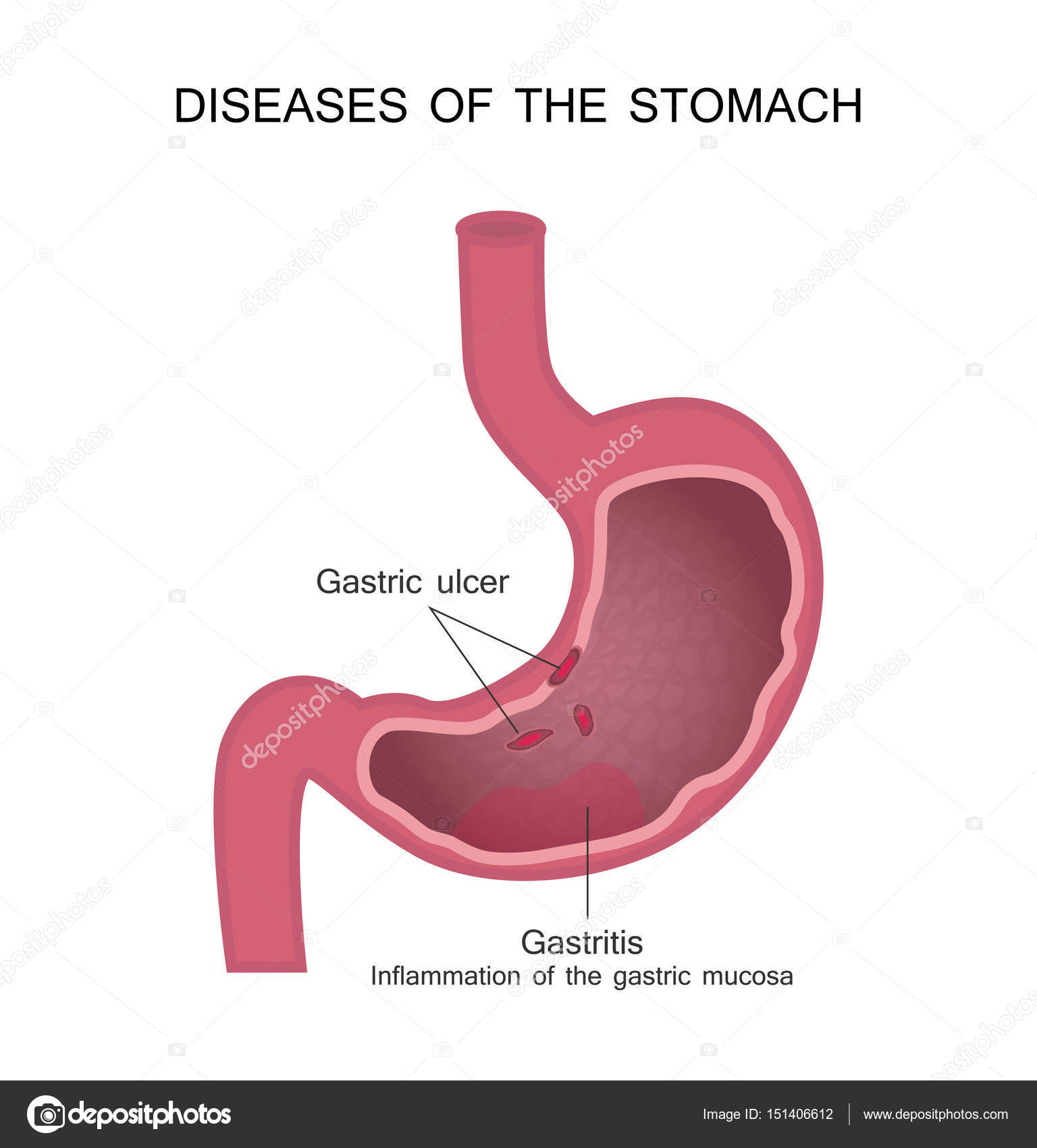
Although ulcers sometimes heal on their own, it’s important to recognize their warning signs. If not properly treated, ulcers can lead to serious health problems, including bleeding or perforation of the organ lining, a life-threatening condition requiring emergency surgery. 35 percent of patients diagnosed with gastric ulcers will suffer serious complications.
Treating Your Ulcer
Your doctor will advise lifestyle changes that might include giving up smoking, NSAIDs and alcohol. He might prescribe medications that include:
•Antibiotics if you have H. pylori infection
•Proton pump inhibitors to reduce acid levels and allow the ulcer to heal
•Upper endoscopy to treat a bleeding ulcer
•Surgery if the ulcer has created a hole in the wall of the stomach, or if there is serious bleeding that can’t be controlled with an endoscope
In the majority of cases, a peptic ulcer will heal in time with proper treatment.
Are you concerned about a loved one’s ulcer or your own stomach pain? Revere Health’s gastroenterologists are specialists who diagnose and treat a wide variety of disorders of the gastrointestinal tract, including ulcers and acid reflux. We offer compassionate, patient-centered care in multiple Utah locations and work with you to develop a treatment plan based on your individual needs and goals.
We offer compassionate, patient-centered care in multiple Utah locations and work with you to develop a treatment plan based on your individual needs and goals.
Revere Health’s experienced gastroenterology professionals offer comprehensive prevention, diagnosis and treatment of digestive disorders. We will work with you to develop a treatment plan based on your individual needs and goals.
Sources:
Web MD
U.S. News: Health
WRITTEN BY:
Telehealth is not appropriate for every medical concern, so it’s important to ask your provider whether a virtual visit is suitable for your needs.
Learn more about Telehealth
From the blog
See more posts
June 26, 2023
Five reasons everyone needs a primary care provider
June 26, 2023
Five reasons everyone needs a primary care provider
- Family Medicine
- Internal Medicine
- Value-Based Care
May 19, 2023
Environmental allergy testing: What to expect and how to prepare
May 19, 2023
Environmental allergy testing: What to expect and how to prepare
- Allergy and Immunology
May 18, 2023
Under one roof: The benefits of integrating Behavioral Health and Primary Care
May 18, 2023
Under one roof: The benefits of integrating Behavioral Health and Primary Care
- Behavioral Health
- Family Medicine
May 3, 2023
Sleep apnea linked to degenerative brain diseases
May 3, 2023
Sleep apnea linked to degenerative brain diseases
- Sleep Medicine
See more posts
This information is not intended to replace the advice of a medical professional. You should always consult your doctor before making decisions about your health.
You should always consult your doctor before making decisions about your health.
Treatment of stomach ulcers in St. Petersburg
22 reviews
Kuznetsova Anna Vladimirovna
Gastroenterologist,
nutritionist,
therapist
Experience 32 years
Highest category
Clinic “Source”
Lenina Square (504 m)
Vyborgskaya (2.0 km)
Chernyshevskaya (2.4 km)
29 reviews
Taktarakova Irina Genrikhovna
Gastroenterologist,
endoscopist
Experience 30 years
PhD
“Medical On Group” on Bogatyrsky
Komendantsky prospect (998 m)
Staraya Derevnya (1.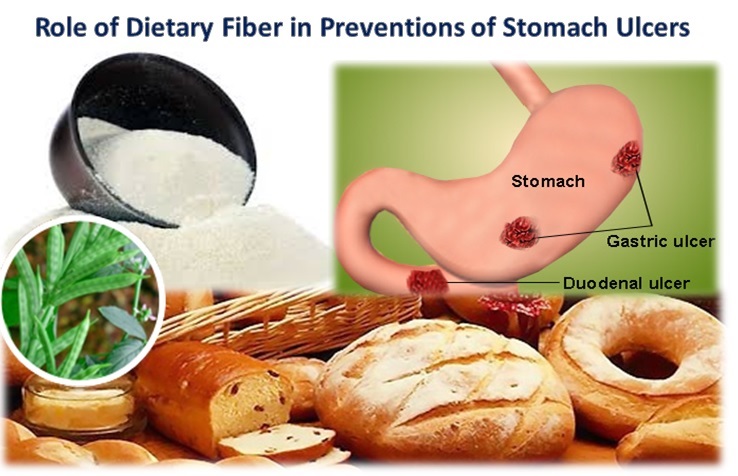 6 km)
6 km)
Pionerskaya (3.2 km)
Jogging (1.8 km)
Staraya Derevnya (3.7 km) 900 15
Komendantskiy prospect (4.2 km)
International (236 m)
Bucharest (1.8 km)
Glory Avenue (2.0 km)
19 reviews
Varshavskaya Irina Viktorovna
Gastroenterologist,
hirudotherapist,
nutritionist,
clinical psychologist,
reflexologist,
physiotherapist
Experience 26 years
Clinic “EuroMedica” on Veterans
Clinic “Doctor Naturopaths” (formerly “GMP”)
Prospekt Veteranov (758 m)
Leninsky Prospekt (1. 3 km)
3 km)
Avtovo (2.7 km)
Vasileostrovskaya (2.1 km)
Primorskaya (2.9 km)
Sports (3.2 km)
Krestovsky Island (196 m)
Chkalovskaya (2.6 km)
Staraya Derevnya (2.7 km)
57 reviews
Makhmudova Samira Gakhirovna
Gastroenterologist,
endoscopist
Experience 6 years
“Medical On Group” on Vosstaniya
“Medical On Group” on Bogatyrsky
Vosstaniya Square (362 m)
Mayakovskaya (425 m)
Dostoevskaya (1.3 km)
Komendantsky Prospect (998 m)
Staraya Derevnya (1.6 km)
Pionerskaya (3.2 km)
7 reviews
Gassieva Anastasia Shayanovna
Gastroenterologist,
therapist
Experience 17 years
“Doctor Pel’s Clinic”
Vasileostrovskaya (597 m)
Sportivnaya (1. 8 km)
8 km)
Admiralteyskaya (2.6 km)
9 reviews
Belyakova Anastasia Alexandrovna
Gastroenterologist
Experience 6 years
Medical Center “Q Clinic” (formerly “Doctor’s office of Dr.
Novocherkasskaya (685 m)
Alexander Nevsky Square-1 (2.2 km)
Alexander Nevsky Square-2 (2.3 km)
1 review
Lina Radchenko
Gastroenterologist
Experience 5 years
Polyclinic №81 “Maximilianovskaya”
Sadovaya (784 m)
Sennaya Square (1.0 km)
Spasskaya (1.2 km)
13 reviews
Storozhenkov Alexander Mikhailovich
Gastroenterologist,
pediatric gastroenterologist
Experience 24 years
Medical center “Medicus” on Koroleva
Medicus Medical Center on Ordzhonikidze
Medical Center “Invitro”
Komendantsky prospect (2. 9 km)
9 km)
Udelnaya (5.0 km)
Pionerskaya (5.0 km)
Zvyozdnaya (1.9 km)
90 004 Kupchino(2.1 km)
Moskovskaya (3.0 km)
Ligovsky Prospekt (564 m)
Bypass Canal (601 m)
Dostoevskaya (1.3 km)
900 03
Vyborgskaya (2.4 km)
Lesnaya (2.4 km)
Muzhestva Square (3.5 km)
Devyatkino (Murino) (1.3 km)
Grazhdansky Prospekt (2.5 km)
Akademicheskaya (5.3 km)
73 reviews
Anuchina Yuliana Gennadievna
Gastroenterologist
Experience 18 years
Highest category
“Medical On Group” on Veterans
Veteranov Avenue (826 m)
Leninsky Prospekt (2.3 km)
Avtovo (3.7 km)
44 reviews
Asanina Yulia Yurievna
Gastroenterologist
Experience 18 years
Highest category, PhD
“Medical On Group” on Karpovka
Petrogradskaya (570 m)
Chkalovskaya (1. 3 km)
3 km)
Gorkovskaya (1.9 km)
27 reviews
Mitroshenko Tamara Pavlovna
Pediatric gastroenterologist,
pediatrician
Experience 40 years
Highest category
Medical Center “O-Three”
Chernyshevskaya (970 m)
Lenin Square (1.7 km)
Mayakovskaya (2.4 km)
Begovaya (932 m)
9000 4 Old Village (3.0 km)
Krestovsky Island (4.3 km)
62 reviews
Kizhlo Lyudmila Borisovna
Gastroenterologist,
hepatologist,
pediatric gastroenterologist,
pediatric infectious disease specialist
infectiologist,
parasitologist
Experience 47 years
PhD
Medical center “Dynasty” on Lenina
Petrogradskaya (844 m)
Gorkovskaya (970 m)
Chkalovskaya (1.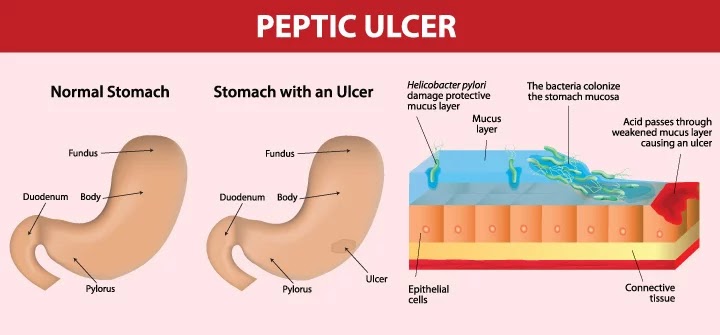 3 km)
3 km)
32 reviews
Turmanidze Liya Shakroevna
Gastroenterologist,
endoscopist
Experience 19years
Top category
Clinic “A-Media”
Prospekt Prosveshcheniya (953 m)
Ozerki (2.4 km)
Parnas (2.8 km)
Kupchino (1.2 km)
9000 4 Danube (1.7 km)
Zvyozdnaya (2.7 km)
International (236 m)
Bucharest (1.8 km)
Glory Avenue (2.0 km)
40 reviews
Korol Natalya Igorevna
Gastroenterologist,
ultrasound doctor,
hepatologist
Experience 23 years
1st category
Clinic “Doctor Sun”
Zvenigorodskaya (528 m)
Pushkinskaya (882 m)
Bypass Canal (1. 1 km)
1 km)
Ozerki (1.5 km)
Udelnaya (1.9 km)
Prospekt Prosveshcheniya (3.1 km)
108 reviews
Klementieva Karine Levonovna
Gastroenterologist,
nutritionist
Experience 15 years
“Medical On Group” on Tovarishchesky
Dybenko Street (657 m)
Prospekt Bolshevikov (2.1 km)
Ladozhskaya (4.7 km)
55 reviews
Lubov Rudakova
Gastroenterologist,
therapist
Experience 16 years
Clinic “OsNova” on Silver Boulevard
Pionerskaya (1.4 km)
Komendantsky prospect (1.5 km)
Old Village (3. 1 km)
1 km)
14 reviews
Novikova Olesya Vyacheslavovna
Gastroenterologist
Experience 18 years
“Medical On Group” on Veterans
Prospekt Veteranov (826 m)
Leninskiy prospekt (2.3 km)
Avtovo (3.7 km)
Prospekt Veteranov (2.6 km)
Leninsky Prospekt(4.0 km )
Avtovo (4.8 km)
49 reviews
Poletaeva Ulyana Yurievna
Gastroenterologist,
ultrasound doctor
Experience 17 years
Medical Center “O-Three”
Chernyshevskaya (970 m)
Lenin Square (1.7 km)
Mayakovskaya (2.4 km)
Vasileostrovskaya (1.1 km)
Sportivnaya (1.5 km)
Primorskaya (2.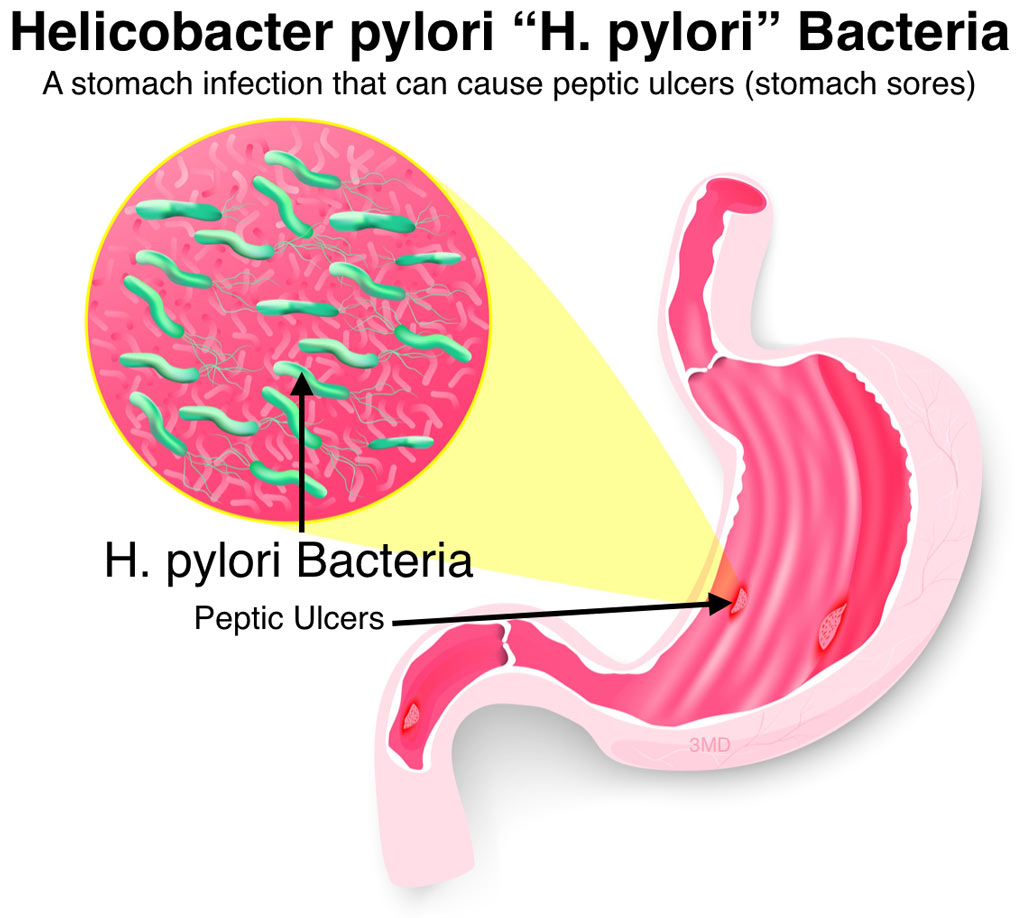 5 km)
5 km)
49 reviews
Gorozhankina Yulia Vadimovna
Gastroenterologist,
hepatologist,
therapist
Experience 20 years
Medical center “Dynasty” on Lenina
“Longevity” on Peasant
Petrogradskaya (844 m)
Gorkovskaya (970 m)
Chkalovskaya (1.3 km)
Gorkovskaya (254 m)
90 004 Petrogradskaya (1.4 km)
Chkalovskaya (2, 1 km)
7 reviews
Sokolova Nadezhda Vladimirovna
Pediatrician,
gastroenterologist,
pediatric gastroenterologist
Experience 24 years
Highest category
Clinic “MIK”
Primorskaya (1. 7 km)
7 km)
Vasileostrovskaya (4.4 km)
Sports (4.9 km)
Running (932 m)
9000 4 Old Village (3.0 km)
Krestovsky Island (4.3 km)
Treatment of stomach ulcers in Voronezh
24 reviews
Bolkhovitinov Alexey Evgenievich
Endoscopist
Experience 29 years
Highest category
German Medical Center “DMZ”
17 reviews
Popova Anna Nikolaevna
Gastroenterologist
Experience 16 years
PhD
Clinic “Owl”
9 reviews
Romanova Marina Mikhailovna
Gastroenterologist,
nutritionist
Experience 31 years
The highest category, PhD
Era Medical Center on Moskovsky Prospekt
Medical center “Peresvet” on Shishkov
87 reviews
Karpova Evgenia Leonidovna
Gastroenterologist,
therapist
Experience 25 years
Ph. D.
D.
Medical center “MedicAss” on Bakhmeteva
Medical center “MedicAss” on Leningradskaya
83 reviews
Kostomarova Victoria Ivanovna
Gastroenterologist
Experience 8 years
Clinic “Owl”
36 reviews
Aichkina Yulia Gennadievna
Gastroenterologist
Experience 8 years
Clinic “Expert” (MRI on Pushkinskaya)
55 reviews
Belyanskaya Elena Viktorovna
Gastroenterologist,
pediatric gastroenterologist
Experience 39 years
Highest category
“Medical Center of Broad Hearts” on Pogranichnaya
“Medical Center of Broad Hearts” on Nevsky
Berezhnoy Sergey Igorevich
Endoscopist
Experience 6 years
German Medical Center “DMZ”
12 reviews
Sergey Pavlovich Ruban
Surgeon,
phlebologist
Experience 27 years
Highest category
“Innovative Vascular Center”
19 reviews
Razinkova Yulia Pavlovna
Gastroenterologist
Experience 14 years
Medical center “SmartClinic”
11 reviews
Tatyana Khripunova
Endoscopist
Experience 9 years
Medical Center “ES Class Clinic”
9reviews
Surnina Evgenia Yurievna
Pediatrician,
gastroenterologist
Experience 10 years
Family medicine clinic “Eucalyptus”
12 reviews
Strygin Evgeny Olegovich
Surgeon,
bariatric surgeon,
plastic surgeon,
phlebologist
Experience 18 years
Clinic “Peresvet” on Pobedy Boulevard, 13
Medical center “Peresvet” on Pobedy Boulevard 13
Medical center “Peresvet” on Shishkov
“Pro Clinics”
9 reviews
Labzhaniya Natiya Bezhanovna
Gastroenterologist,
therapist
Experience 9 years
Family medicine clinic “Eucalyptus”
6 reviews
Rogatneva Alisa Sergeevna
Gastroenterologist
Experience 11 years
Clinic “Expert” (MRI on Pushkinskaya)
165 reviews
Sergey Pavlovich Korolev
Endoscopist
Experience 20 years
Highest category
Medical Center “Sacvoyage of Health”
Regional Consultative and Diagnostic Center (VOKDC)
16 reviews
Vatutina Valeria Sergeevna
Gastroenterologist
Experience 14 years
1st category
Polyclinic “Dubrava”
Regional hospital №1 for 9km (OKB)
38 reviews
Trunova Polina Arkhipovna
Endoscopist
Experience 42 years
Regional Consultative and Diagnostic Center (VOKDC)
33 reviews
Natalia Denisovna Vybornova
Gastroenterologist
Experience 9 years
1st category
Clinic “Bevz”
“Family doctor”
Dupin Vitaly Nikolaevich
Abdominal surgeon,
ultrasound doctor,
minimally invasive surgeon
oncologist,
surgeon
Experience 6 years
Emergency Hospital No.